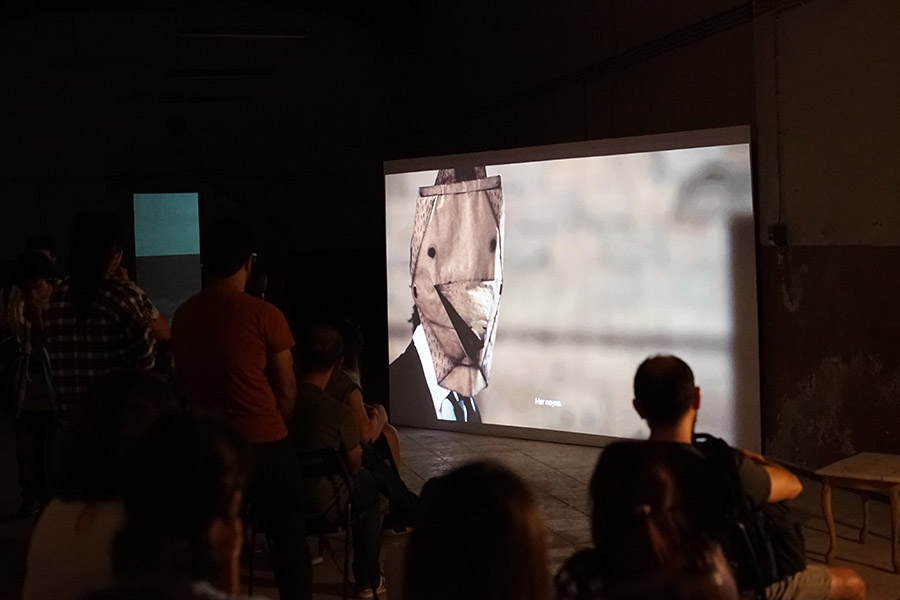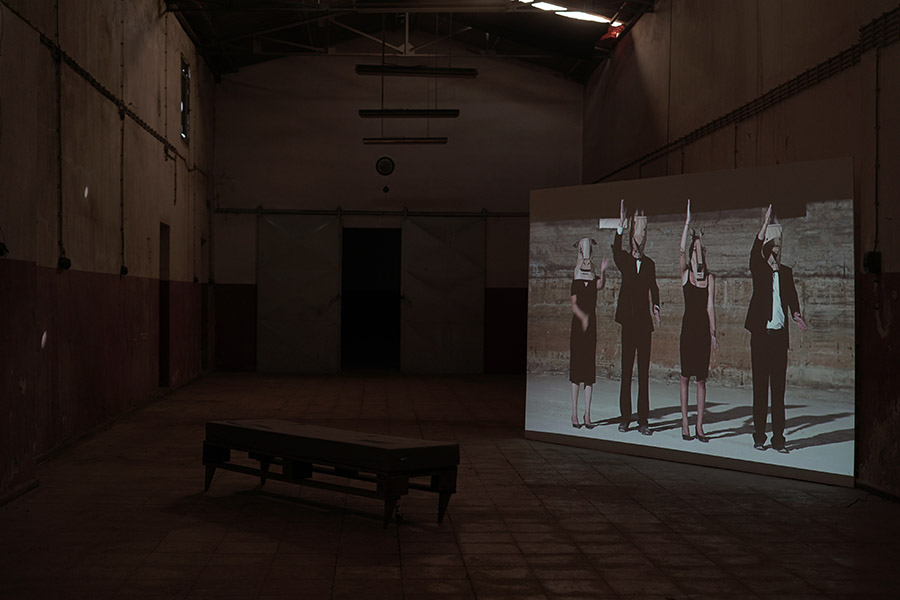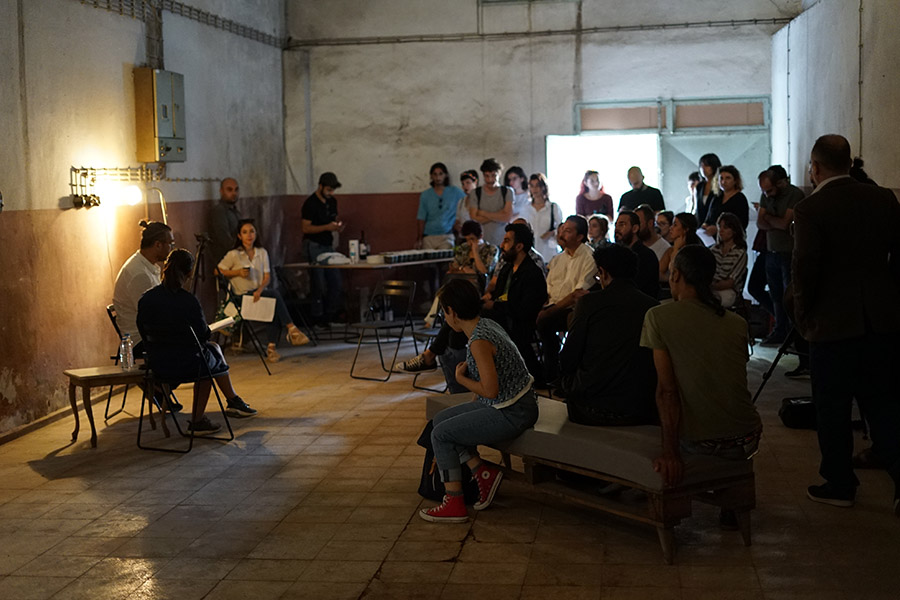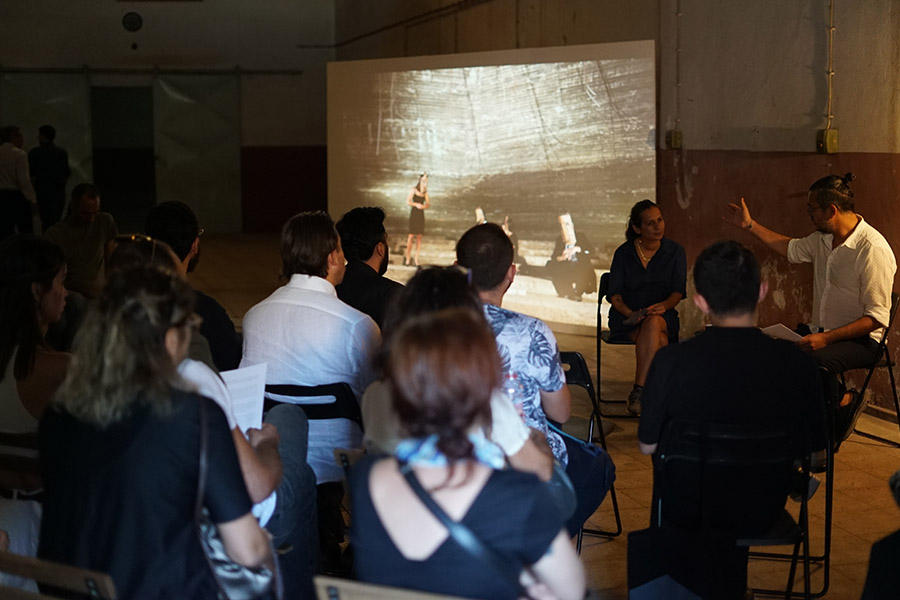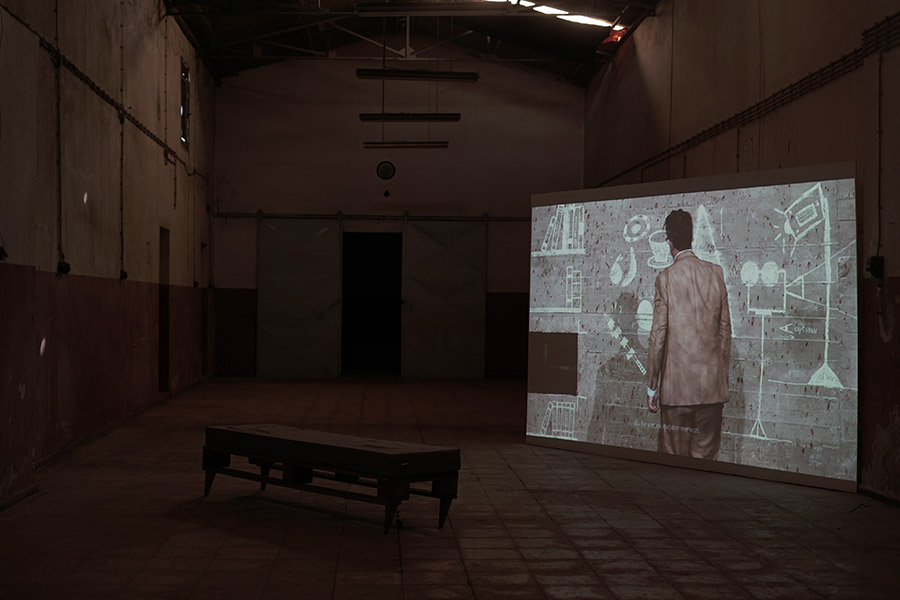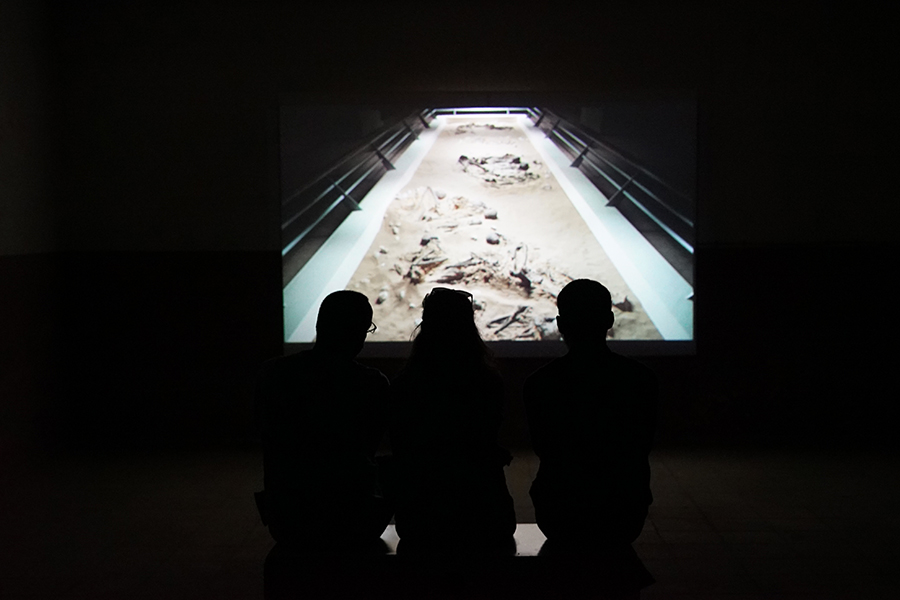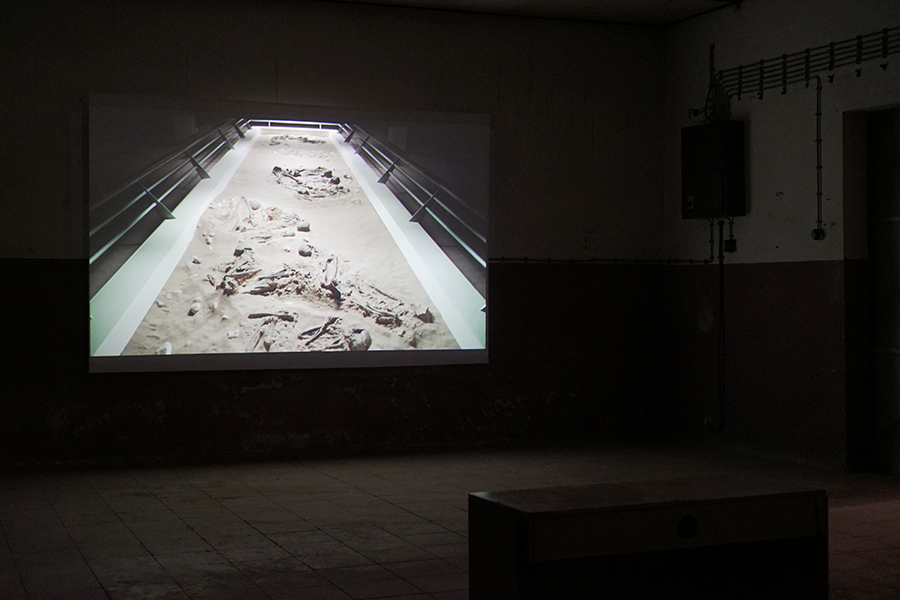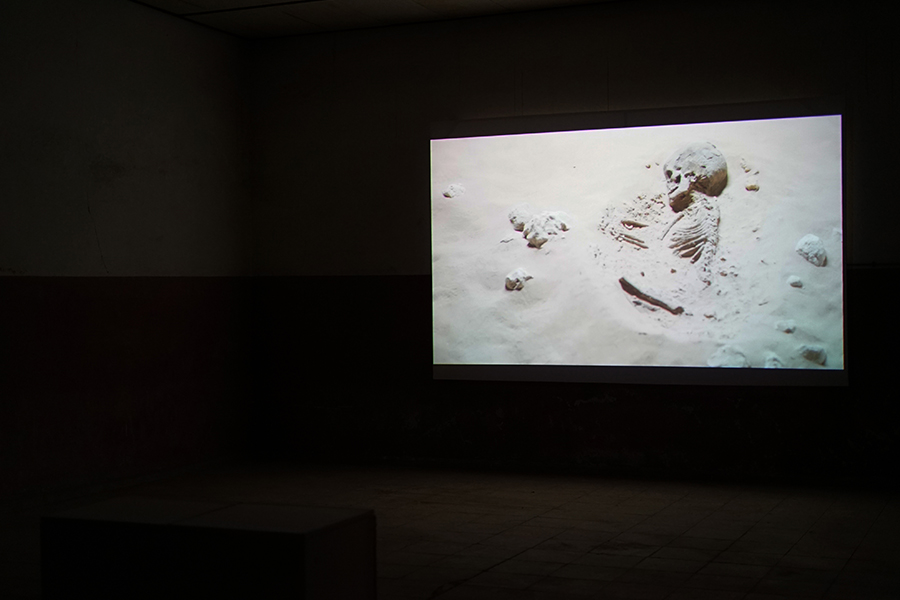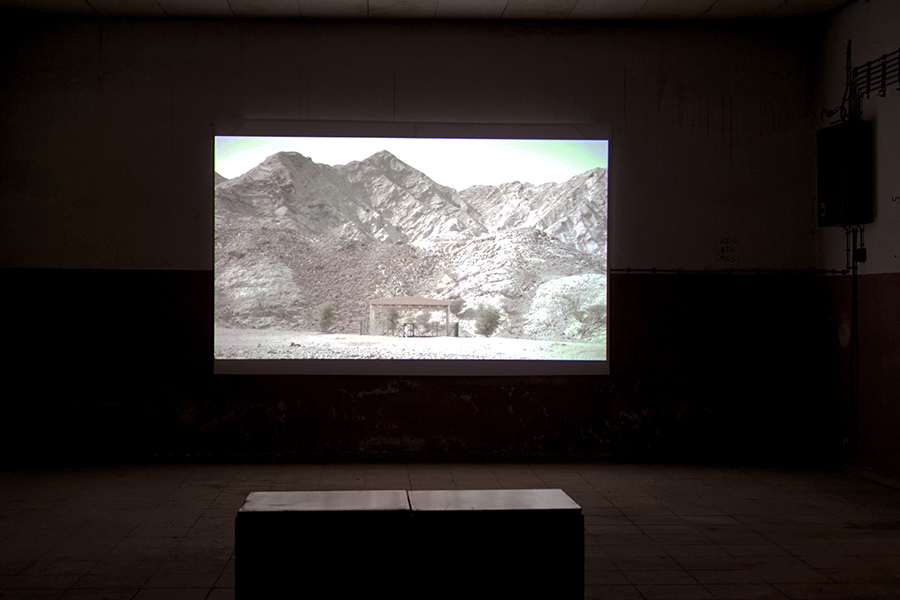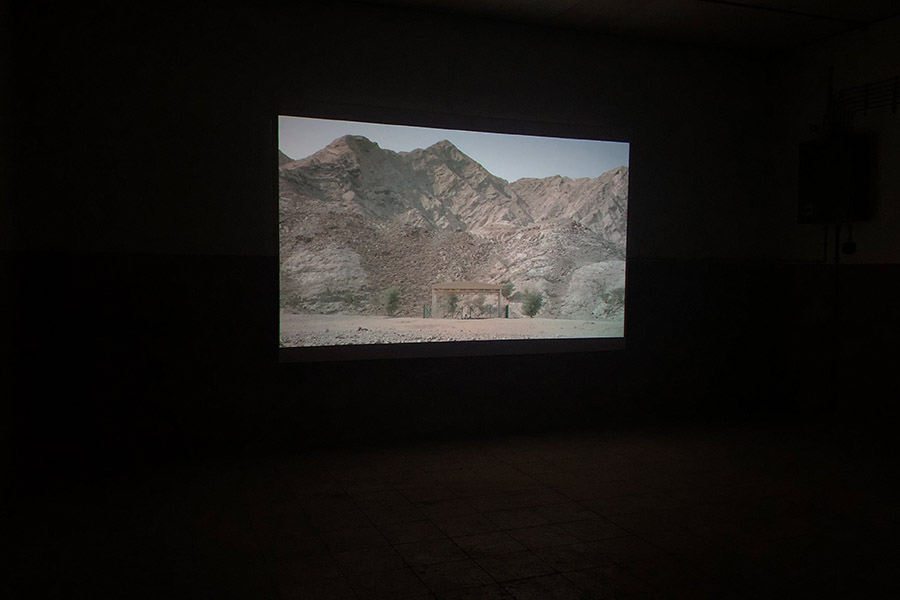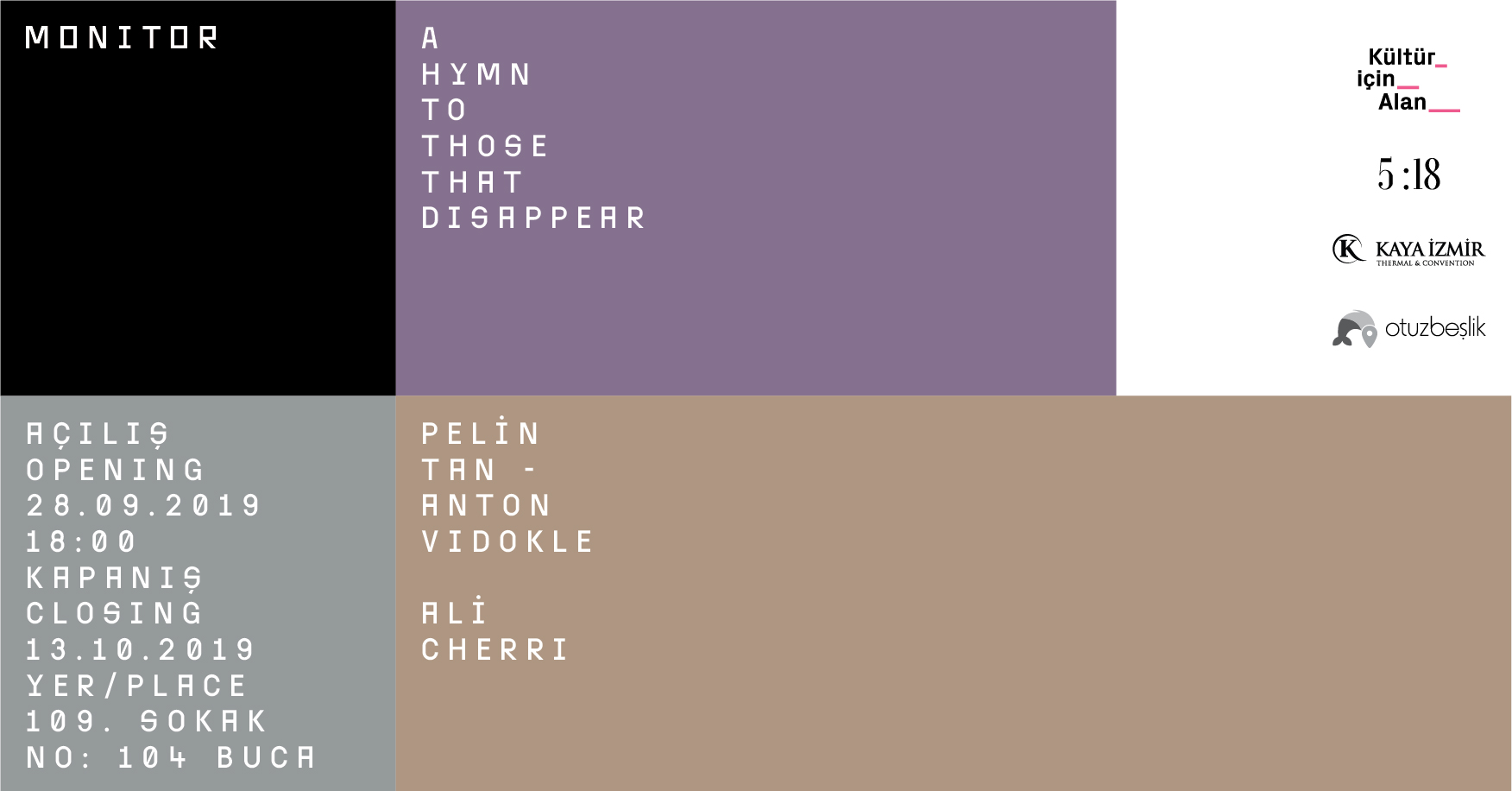Please scroll down for English
“A hymn to those that disappear”
28/09 – 13/10/2019
Pelin Tan – Anton Vidokle, Ali Cherri
Açılış / Opening: 28/09/2019, 18:00
109. Sokak No: 104, Buca
Monitor, yeni sezonu “A hymn to those that disappear” başlığını taşıyan sergisiyle karşılıyor. Pelin Tan ve Anton Vidokle işbirliği, bu sergide Ali Cherri’nin çalışmasıyla bir araya geliyor. Buca’da, geçmiş zamanda sinema ve matbaa olarak kullanılmış bir mekânda gerçekleşecek sergi, 28 Eylül’de yapılacak Pelin Tan ve Deniz Güner söyleşisiyle birlikte kapılarını açacak.
“Tarihçiler geçmişten bir hazine, bir miras olarak söz ederler. Tarihin ezilen sınıfları içinse tarih bir enkaz, bir yıkıntılar yığını, bir talan alanıdır. Bir dizi öykünün birbirini doğurarak bugüne doğru ilerlediği bir birikim değil, geçmişin bugüne kavuşması değil, bir öykünün başka öyküleri tüketerek, unutturup yok ederek kendini tek kılması, geçmişin beklentilerinin yok edilmesidir. Bu yüzden kültür denen sürekliliğin ardında hep bir barbarlık vardır.”*
Lübnan doğumlu sanatçı Ali Cherri’nin Sharjah çölündeki Neolitik Çağ’dan bir nekropolde geçen çalışması “The Digger” arkeolojini
n, sömürgecilik ve kapitalizmle ilişkisini inceler. Buranın yirmi yılı aşkın süredir koruyuculuğunu yapan Sultan Zeib Khan’ın nekropolü çevreleyen dev kayalıklarla rol aldığı çalışmada, bir zamanlar orada olanların yokluğu nekropolün varlığından daha rahatsız edici bir boşluk sunar. Yerlerinden ideolojik anlamlar yüklenmek üzere edilen geçmiş zaman insanlarına ait parçalar, tarih anlatısı yaratmak üzere inşa edilmiş müze sınırlarına taşınıp ışıklandırılmış korunaklı camlar altında, ulusal kimlikleri oluştururlar. Yaşamdan olanın anlamını yüceltmek için kültür ürününe dönüştürme arzusu, nekropolden çok da uzakta görünmeyen gökdelenleri oluşturan düşünce biçimine hizmet eder.
Son Bakışta Sanat kitabında Taylan Altuğ, Schiller’in estetik teorisine ve onun politik düzenin değişmesinin insanın düşünce tarzındaki toptan değişimin gerçekleşmesine bağlı olduğuna değinir. İnsanın özgürlüğü için onda bir arada bulunması gereken duygusal ve akılsal yönler ancak sanatın olduğu yerde mümkündür. Altuğ’un anlatımında, Schiller’e göre sanatın hüküm sürdüğü yerde güzellik yasaları geçerlidir. Ancak böyle bir ortamda gerçek olanın kalıpları dışına çıkılır ve ardından özgürlük gelir.**
Pelin Tan ve Anton Vidokle ortak çalışması “The Fall of The Artsits’ Republic”, ne güç ne de ahlak devletlerinin başarabileceği, toplumu “gerçek” kılma eyleminin*** gerçekleşebileceği estetik devlete örnek, böyle bir özgürlüğün gerçekleşmiş olduğunu varsayabileceğimiz bir yönetim sunar. Peki, insanlık için ideal toplumsallaşmayı sunan bu yönetim biçimi neden çökmüştür?
George Thomson, İnsanın Özü isimli kitabında, yaşamın çelişmelerden ibaret olduğundan ve bu çelişmelerin son bulmasıyla yaşamın da sona ereceğinden bahseder. Yazara göre, organizmanın çevresiyle sürekli madde değiş tokuşu yapması yaşamın kendisidir. Organizmanın hayatta kalışı bu değiş tokuşun devamlılığıyla doğrudan ilişkilidir.**** Thomson’ın önermesinden yola çıkarak, gündelik yaşamın tamamının sanata dönüştürülmesi sonucu sanatçı cumhuriyetinin çöküşünü, sanatın çelişebileceği bir alan kalmaması ve böylelikle besleneceği kanalların ortadan kalkmasına bağlamak mümkün müdür?
Yaşamdan olanın sanata dönüştürülmesini ve yaşamın tamamının sanata dönüşümünü sunan örnekler üzerinden devlet, toplum ve sanat arasındaki ilişkinin sorgulandığı “A hymn to those that disappear”, 13 Ekim Pazar gününe dek Buca’da ziyaret edilebilir.
—–
Monitor welcomes the new season with the “A hymn to those that disappear” exhibition. The cooperation of Pelin Tan and Anton Vidokle meets with Ali Cherri’s work in this exhibition. The exhibition opens its doors with a conversation with Pelin Tan and Deniz Güner on September 28
th in a venue that was used as a cinema and printing house in Buca in the past.
“In the historical materialist they have to reckon with a distanced observer. For what he surveys as the cultural heritage is part and parcel of a lineage which he cannot contemplate without horror. It owes its existence not only to the toil of the great geniuses, who created it, but also to the nameless drudgery of its contemporaries. There has never been a document of culture, which is not simultaneously one of barbarism. And just as it is itself not free from barbarism, neither is it free from the process of transmission, in which it falls from one set of hands into another.”*
In his work “The Digger”, that is based on a necropolis from Neolithic Age in Sharjah Desert, artist Ali Cherri, born in Lebanon, examines the relationship of archeology with colonialism and capitalism. Sultan Zeib Khan, who has been the protector of the necropolis for more than twenty years, has a role in the work among the huge rocky place that surrounds the necropolis. The absence of those who lived there once,
discloses an emptiness that is more disruptive than the existence of the necropolis. The pieces that belong to people of past times who were displaced for ideological reasons, now constitute national identities by being carried inside the borders of a museum constructed for building a historical narrative and presented under lightened and protected glass. The desire to turn what belongs to life into cultural products in order to aggrandize its meaning serves the way of thinking that constituted skyscrapers that seem not to be too far from the necropolis.
In his book Art at Last Sight (Son Bakışta Sanat), Taylan Altuğ touches upon the aesthetics theory of Schiller and his opinion that the change in political order depends on realization of a total change in people’s way of thinking. The emotional and cognitive features required for the freedom of a person can only develop with the presence of art. In Altuğ’s narration, Schiller argues that laws of beauty rule where art prevails. Only in such an atmosphere it becomes possible to move out of the patterns of reality and after that comes freedom.**
Pelin Tan and Anton Vidokle’s joint work “The Fall of The Artsits’ Republic” presents a way of government that allows such freedom as an example of an aesthetic state where the act of “realizing”*** society can be possible. Neither a state of power nor a state of ethics could realize that. Then, why has this way of government that provides ideal socialization for humanity, collapsed?
In his book The Human Essence, George Thomson argues that life is all about conflicts and when these conflicts come to an end life would also end. According to the author, the organism’s constant exchange of material with its environment constitutes the life itself. The survival of the organism is directly related to the continuity of this exchange****. Basing on Thomson’s assumption, is it possible to connect the collapse of the artist’s republic due to transformation of the whole daily life into arts to remaining of no field that art can conflict with and therefore removal of channels that arts could feed on?
“A hymn to those that disappear”, which questions the relationship between the state, society and arts basing on examples presenting transforming what belongs to life into arts and transforming the whole life into arts, can be visited in Buca until October 13th.
* Walter Benjamin, Son Bakışta Aşk – Walter Benjamin’den Seçme Yazılar, Hazırlayan Nurdan Gürbilek, Metis Yayınları, 1993, Sf. 34
**Taylan Altuğ, Son Bakışta Sanat, Yapı Kredi Yayınları, 2012, sf: 39
*** A.g.e., sf. 31
****George Thomson, İnsanın Özü, Çev. Celâl Üster, Payel Yayınları, sf. 19
